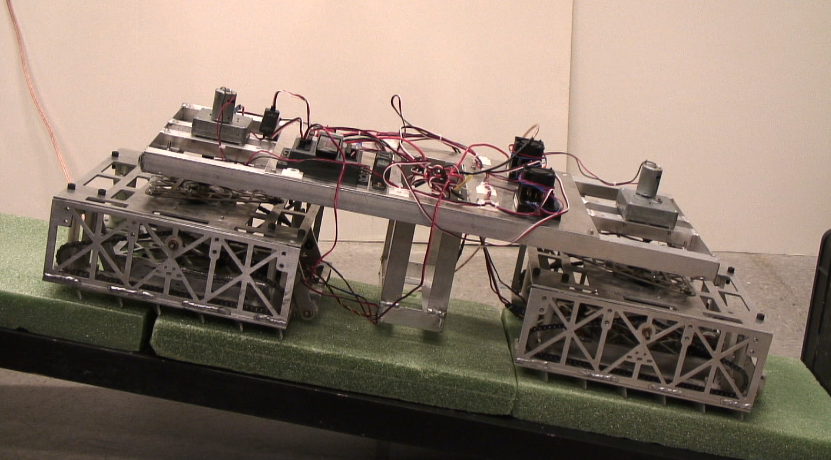Snake design inspires improved search-and-rescue robots
January 23, 2012
Georgia Tech researchers have designed a new all-terrain robot by studying the locomotion of snakes.
Designing an all-terrain robot for search-and-rescue missions requires a machine that is flexible enough to move over uneven surfaces, yet not so big that it’s restricted from tight spaces.
It might also be required to climb slopes of varying inclines. Existing robots can do many of these things, but most require large amounts of energy and are prone to overheating.
“By using their scales to control frictional properties, snakes are able to move large distances while exerting very little energy,” said Hamid Marvi, a Mechanical Engineering Ph.D. candidate at Georgia Tech.
While studying and videotaping the movements of 20 different species at Zoo Atlanta, Marvi developed Scalybot 2, a robot that replicates rectilinear (straight-line) locomotion of snakes. “During rectilinear locomotion, a snake doesn’t have to bend its body laterally to move,” explained Marvi. “Snakes lift their ventral scales and pull themselves forward by sending a muscular traveling wave from head to tail. Rectilinear locomotion is very efficient and is especially useful for crawling within crevices, an invaluable benefit for search-and-rescue robots.”
Scalybot 2 can automatically change the angle of its scales when it encounters different terrains and slopes. This adjustment allows the robot to either fight or generate friction. The two-link robot is controlled by a remote-controlled joystick and can move forward and backward using four motors.
Last summer the team developed Scalybot 1, a two-link climbing robot that replicates concertina locomotion. The push-and-pull, accordion-style movement features alternating scale activity.
